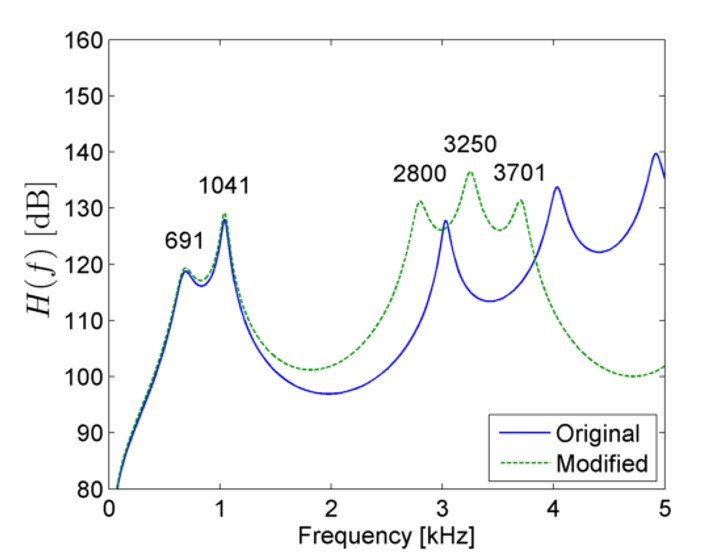GTM papers on numerical voice production at the international congress InterNoise 2019.

The member of the GTM Prof. Oriol Guasch presented two works made in collaboration with Dr. Marc Arnela and Dr. Arnau Pont at InterNoise 2019, which was held in Madrid (Spain) from 16-19 June.
Those works address different aspects of the numerical production of voice using finite element codes. The first one proposes an alternative to non-linear radiation pressure to determine the sensitivity functions needed for reshaping human vocal tracts to produce certain expressivity effects. The second one proposes implementing a random distribution of Kirchhoff’s spinning vortices to emulate the aerocaoustic sources in sibilant /s/ generation, which avoids resorting to supercomputer facilities to obtain them from the solution of the Navier-Stokes flow dynamics equations.
The oral presentation of the two papers was done by Prof. Oriol Guasch.
The reference of the first paper is:
- Oriol Guasch, Marc Arnela and Arnau Pont (2019); “Modal perturbation analysis instead of nonlinear radiation pressure to derive the area sensitivity function for resonance tuning in an axisymmetric duct with variable cross-section”, InterNoise2019, June 16–19, Madrid, (Spain),
with abstract:
Axisymmetric ducts with variable cross-section are of importance in many acoustic problems ranging from horn theory to vocal tract acoustics. Webster’s equation is commonly used to describe their performance in the plane wave propagation regime. In some problems, mostly related to voice generation, one is interested in modifying the area of the duct cross-sections to adjust the frequency of a resonance. For instance, one may want to increase its value, or to bring a group of resonances closer together, to emulate effects that occur in natural voice production. To that goal, an optimization iterative process can be followed in which the cross sections are subsequently changed, according to an area sensitivity function, until the resonances of the duct are placed at the target position. Traditionally, the area sensitivity functions have been derived from the non-linear radiation pressure inside the duct. In this work we demonstrate there is no need to resort to such non-linear phenomenon because the same result can be deduced from a first order modal perturbation analysis of the duct eigenfrequencies. After proving that, we present some simulations in the framework of expressive vowel production.
The reference of the second paper is:
- Arnau Pont, Oriol Guasch and Marc Arnela (2019); “Fast computational aeroacoustics using random distributions of Kirchhoff’s spinning vortices with application to sibilant sound generation”, InterNoise2019, June 16–19, Madrid, (Spain),
with abstract:
Hybrid approaches to low Mach number computational aeroacoustics (CAA) for three-dimensional problems have a high computational cost and often demand resorting to supercomputing facilities. The bottleneck concerns the first step of the process, in which a computational fluid dynamics (CFD) simulation is carried out to solve the incompressible Navier-Stokes equations, to obtain the source term for the acoustic wave equation. In this work we suggest that, for some problems in which average results are only needed, it may be possible to avoid the CFD simulation and approximate the flow noise sources by means of a random distribution of Kirchhoff’s spinning vortices. In this way, one simply needs to solve an acoustic linear wave operator to solve the aeroacoustics problem. We have applied such methodology to simulate the generation of the sibilant sound /s/ on a realistic geometry for which CAA and experimental data exist. After validation, the versatility of the proposed approach is tested on a simplified geometry, which may be useful to synthesize more complex sound in the future, like syllables. Implementation details of the vortex distribution in a stabilized finite element (FEM) code are also discussed.

Figure 1. Vocal tract transfer function showing a formant clustering obtained by reshaping the vocal tract by means of area sensitivity functions.

Figure 2. Acoustic waves propagating inside the vocal tract and outside the mouth generated by the aeroacoustic sources located between the lower incisors and lower lips when producing an /s/.
Prof Oriol Guasch would like to thank l’Obra Social de la Caixa and the Universitat Ramon Llull for their support under grant 2018-URL-IR2nQ-031.